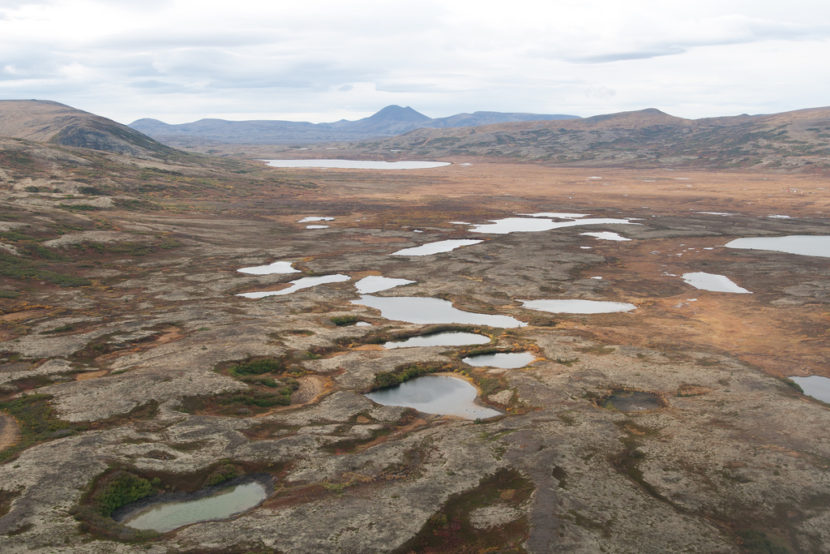
The U.S. Army Corps of Engineers continued its series of public hearings on the proposed Pebble Mine and the project’s draft environmental review this week.
Nondalton is the closest community to the proposed Pebble Mine site, sitting about 17 miles east.
More than 30 people attended a hearing Monday on the Army Corps’ draft environmental review of the project. A handful of residents voiced concern about how the mine would affect fishing and hunting, as well as its proximity to Lake Clark National Park. Few spoke in favor of the project and several, like life-long resident June Tracey remained neutral on the project.
But Tracey said that residents needed an economic boost in the area as the state grapples with its fiscal crisis.
“We get all of our machines,” she said. “We have our Hondas, our boats, chainsaws, that we need gas for. We don’t have any more dog teams. We have a lot of little mutts out there. But that’s not going to help us. And with the state and the federal cuts, we’re going to be hurting.”
Another hearing was held the next day in Dillingham, the largest Bristol Bay community. Its long-standing opposition to the project was apparent.
Many of the roughly 60 people that testified during the five-and-a-half-hour meeting voiced familiar concerns about potential changes to their way of life and the environment. At times, testimony was deeply emotional.
J.J. Larson is a commercial fisherman and third chief of the Curyung Tribal Council.
“Having that up there – the mental effect that has on our people, knowing that someday that dam is going to go, and we’re going to lose our lifestyle,” he said. “It might not happen in my generation. It might not happen in my son’s lifetime or his son’s lifetime. But it’s like living with a loaded gun pointed to the back of your head and not knowing when the trigger is going to be pulled.”
Several testifiers traveled to Dillingham from other communities. A few of them supported the project, citing the need for jobs.
The Army Corps’ Lieutenant Colonel Penny Bloedel began the closing remarks.
“Thank you for your heartfelt comments,” she said. “We do have – I’m not supposed to be emotional, but we are committed to open and transparent communication and inclusive and collaborative report…”
Later in the week, outside of Homer High School, over 100 people demonstrated against the proposed mine, chanting “Fish Forever, Pebble Never!”
Roughly the same amount of people testified inside, mostly against the project, calling the draft EIS bad science.
Those like Cook Inletkeeper science director Sue Mauger argued the Army Corps underplayed the potential impacts of the mine. Mauger focused on salmon.
“No efforts to link the impacts across life-history stages,” she said. “No consideration of local adaption to thermal conditions, unsupported assumptions about thermal effects on the aquatic invertebrates that make up a salmon’s diet. This document is incomplete and reflects a sad disregard for the very real concerns Alaskans have about this proposed project on Bristol Bay salmon resources.”
Others opposed to Pebble, like Mike Bryeli, expressed frustration and exhaustion while talking about the EIS process.
“You’ve heard it a thousand times over and over for years and years,” he said. “I mean, how many times do we have to do this? Just let this thing die, please. Let it go.”
The Corps maintains that the draft EIS was completed within the constraints of the federal permitting process. The comment period on the draft closes May 30.
